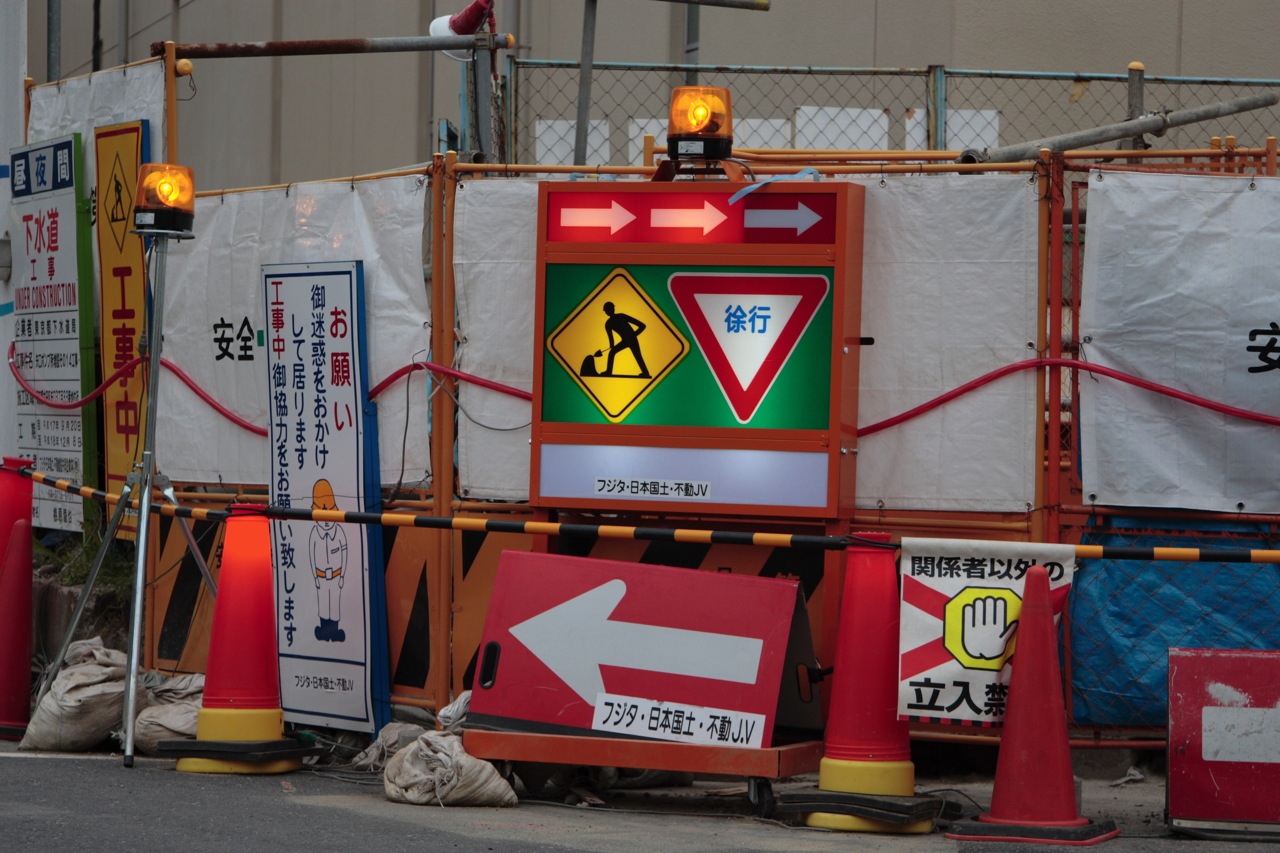Category: Research
DANG: It’s on in Chicago

Last week, I received confirmation that the Digital Anthropology group – DANG – panel was accepted for the American Anthropological Association 2013 Conference. As a reminder, I’ll be discussing the necessity of conflict in refining the values and goals of a fandom online. My paper (presentation) is titled “It boils down to respect”: Defining the values of a fandom through conflict online.
My abstract begins: “Increasingly, social media allows users to connect their online behaviors to physical practices in pursuit of collective goals. In these digital public spaces, communities of practice are able to bypass geographic and temporal boundaries. For U.S. Women National soccer team (USWNT) fans, Tumblr offers a digital realm in which multimodal communication unfolds – and quite often, conflict arises. Through online ethnography and discourse analysis, this study examines conflict as essential to refining USWNT fandom values; however, conflict also jeopardizes the participatory practices that define the fandom.”
The presentation is limited in time (15 min!!), which means a very focused and limited scope of discussion. I anticipate presenting a version of the discussion I have already prepared – focusing on the specific ways in which the fandom policies the “USWNT” tag and reinforces attribution or “sources.” These activities are borne out through messaging, anonymous posts, and text posts in the tag. These are really significant moments of productive conflict and help articulate group-defined “appropriate” behavior. Yet these conflicts also threaten archiving and sharing habits; spoiler alert: some fans refuse to continue to share, while others stop using tags which are used to refresh fan knowledge. Therefore, a delicate balance of conflict must be maintained, as too much discord threatens to dry one data stream through which fandom knowledge is developed.
I’ll share more of my preparations closer to November. Get in touch if you are heading to Chicago for AAA 2013, too –
Windy City, here we come!
Doing it well: Communication and Discourse work in the fandom

In this post, I summarize specific actions and communication in a fandom in a social networking space, focusing on how discourse work can be seen in their daily activities. This post shifts focus from my recent posts relating to my work in cultural heritage in digital spaces to draw out parts of my ongoing research in the US Women’s soccer team (USWNT) Tumblr fandom.
As alluded to on my landing page, I have been conducting an ethnographic, or netnographic (Kozinets, 2009), study within the social networking and microblogging site Tumblr for the last two years. I perceive Tumblr to be a unique digital space that allows individuals to “opt in” to a community of practice – one that integrates discourses of women’s sport and soccer, media, competition and nationalism, notions of gender and sexuality, and narratives of the USWNT in daily discussions.
When individuals in the USWNT fandom share, consume, and create content, they encourage a shared group affiliation (as “fans”). Their communication occurs in a flexible, asynchronous social realm. Through choices in language, timing, media, and “tone” these fans establish a series of temporary discursive spaces to explore, express, and discuss their feelings.
Communication within the wider USWNT “fandom” project
- actively teaches new users,
- rewards insider knowledges,
- allows for dissension and discussion, and
- offers opportunities for inclusion of fans, who might otherwise be isolated from fan activity
Tumblr’s structure also facilitates distinct techniques of self-expression and specific language selections shared through tags, asynchronous communication, “reblogging,” and “asks.” Fandom activity includes discourse work and content creation.
On Tumblr, USWNT fans do the following*:
- make text post updates from official US Soccer sources
- post original text posts stating feelings or opinions on the team’s performance
- post original text posts stating feelings or opinions about other people/fans in the fandom
- make and answer anonymous questions using the “Ask” feature on Tumblr
- share social media content from players – typically tweets and Instagram pictures
- share images from USWNT training sessions and games
- share images from NWSL training sessions and games
- create GIFs of moments from games
- create GIFs of informal moments from US Soccer official sources (regenerating and reworking discourse)
- create specialized graphical representations with images
- request and provide links – livestreams, presentations, videos
- request GIFs, videos, and other information from other users
- tag posts – categorizing and allowing content to be searched
- police use of the tags – specifically the tag “USWNT” – by messaging and posting “rules” of tagging
- ask for input and opinions on apparel, ticket purchases, game etiquette and moe
- discuss the fandom and their feelings of inclusion and participation in that community
As a part of this study, it has become clear that not only is the USWNT fandom shaped by a number of resources and communication practices – and there are also differences in fandom activities at different times. For example, in February, I compared the variations in language choices some fans make during a game – or when they are “livetumbling” – and in their daily circulation of posts and reblogs.
In reblogging posts, users are clearly making decisions about which components of public meaning and insider knowledge they would like to perpetuate. When a user likes or reblogs a post about Alex Morgan but ignores another post about Amy Rodriguez, they are marking out the space and value of pieces of knowledge for the fandom.
What the USWNT fandom actually discusses and creates are representations of the USWNT, players, other fans, opponents, and other popular culture narratives. As with making knowledge, representations are devised through making choices, where fans work with discourse and other cultural materials from which interpretations may be made. Mediated sport discourse, as well as USWNT fandom Tumblr disourses, provide accounts; neither reality nor clean interpretation of events. Rather, as with discourses of mediated sport, Tumblr discourses present a version of events that speaks to broader social relationships and understandings of sexuality, national identities, gender, and imply relationships of power.
Watch this space for further discussion of the implications of these strategic communication choices in the USWNT fandom.
*This is an on-going and developing list, and certainly not exhaustive at this point!
Free Thinking: Models of Knowledge Construction

Just a few quick notes — “free thinking” in the spirit of #showyourwork — and on the subject of the production and construction of knowledge*.
This spring/summer I’ve observed at least three separate types of digital spheres in which engagement and information exchange occur: Tumblr fandom, Wikipedia, and transcription models. I have approached these as “project-oriented” spaces because participants
- are operating independently but with the belief that others can see and share their work/product/material,
- have opportunities to see the work of others and integrate, respond to, or reject that work
- can use the technology to assert information as knowledge, evidence, or fact
- can communicate with [someone else] working on the project, though maybe not always directly with each other.
These spaces have also been home to certain kinds of collaborative or project-oriented communication. In other words, in these spaces people have shared information with or without conditions, been working together to achieve a goal, and/or have worked together to create an agreed-upon outcome (consensus). Finally, these are realms of knowledge production and/or construction.

In the past, I have referred to webs of knowledge and cultural webs in my writing – and often what I am discussing is how individuals come together to share information or existing “knowledge” about subjects. Yet, in these spaces, we can also see nuances of producing or constructing knowledge – two different models of knowledge at play in these spaces.
I have distinguished between these models as “authorized” versus “authenticated” knowledge. I’ve gotten feedback that these definitions sound IT or technologically centered. I briefly considered “control” versus “consensus” but that appears to me too critical of the former – and actually so does “authorized.” Therefore, I am resting my thoughts currently on the following pair:
“Offered” versus “Authored” knowledge
These models of knowledge are distinguished and related to spaces of participatory practices in a few ways.
First, “offered” knowledge is the suggested or preferred way of viewing the body of information – you could perhaps label it official, or curated, or dominant discourse. “Authored” knowledge is a version of information developed through a collaborative and information-sharing process. One way to think of this kind of knowledge is as augmenting or contextualizing “offered” knowledge.
Secondly, In participatory processes, “offered” knowledge can be combined with other knowledge repositories to create “authored” knowledge. “Authored” knowledge, therefore, references and/or builds upon existing “offered” knowledge. As a participant contributes to “authored” knowledge, he or she may reference the discrepancies between these two knowledge bases. He or she might also gain acceptance or earn status in the group by understanding and correctly using (and perpetuating) authored knowledge.
I will jump off here and continue to flesh out the relationship between “offered” and “authored” knowledge – and how it is implicated in sustaining or remaking relationships of power. If you’ve come across these models in other spaces, please share your observations in the comments. I’m curious to learn more about digital places that highlight models of knowledge and where “offered” knowledge is sustained or remade through participatory “authoring.”
*knowledge: “a (1) : the fact or condition of knowing something with familiarity gained through experience or association (2) : acquaintance with or understanding of a science, art, or technique” – merriam-webster.com, http://www.merriam-webster.com/dictionary/knowledge
Image via Flickr Commons – gullevek and Construction Work (2006)
Smithsonian Institution Transcription Center in Beta
We launched the Smithsonian Digital Volunteers Transcription Center Friday 21 June as a collaborative, crowdsourced process that aims to bring digitized collections out from archives and museums. We are inviting our SERIOUSLY AMAZING audiences to help us unlock their stories by transcribing and reviewing their contents – to make them more accessible, searchable, and open.
This is another outstanding opportunity to make webs of knowledge and learn about the connections between collections. Please jump in and help where you can!
**UPDATE** (14 October): The Transcription Center is fully back in business with new features to launch shortly – while many projects have been moved to completion, there are still plenty of pages to transcribe and review. Join the community of digital volunteers!
My role has involved advising on use for communities of practice, understanding crowdsourcing capabilities, and developing coherent narratives for the pieces – rather than technical development – but I welcome feedback on usability, design, and any other “would be nice.”
Feel free to transcribe and offer feedback if you have thoughts to share! The service is still in beta and we are constantly integrating what we learn from users. Thanks for allowing me to share this successful first step in our transcription process – more to follow…
Transcription beyond Description at SIA
Last Tuesday, I shared some of the work I’ve been doing at Smithsonian Institution Archives (SIA) through their The Bigger Picture blog. Find out how I’ve been researching engagement and ways audiences can help weave webs of knowledge with SIA collections through the link or here.
